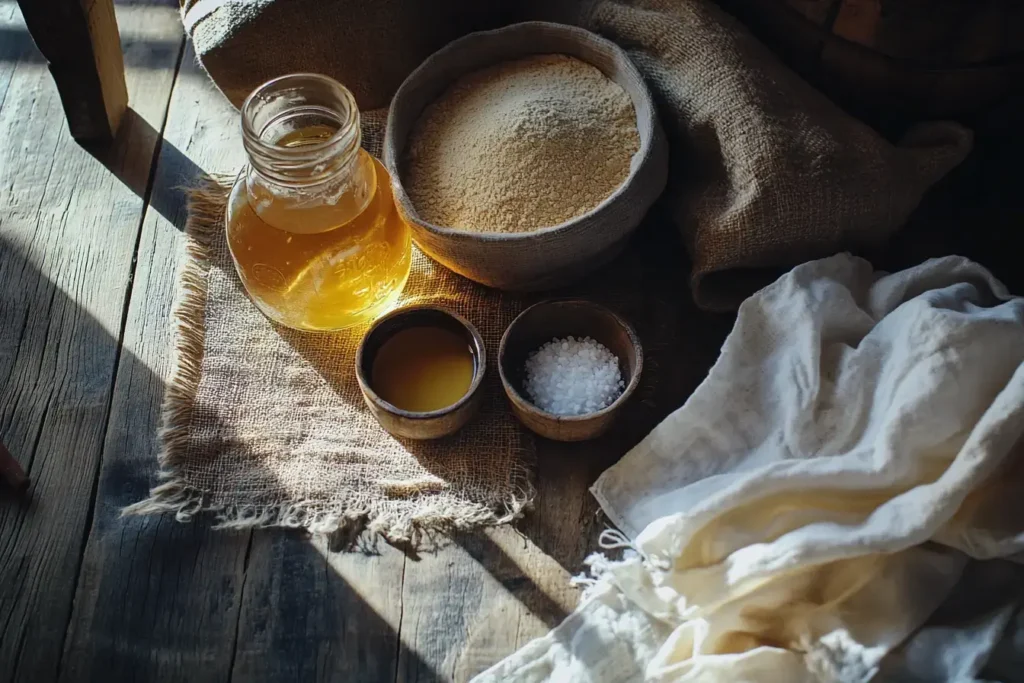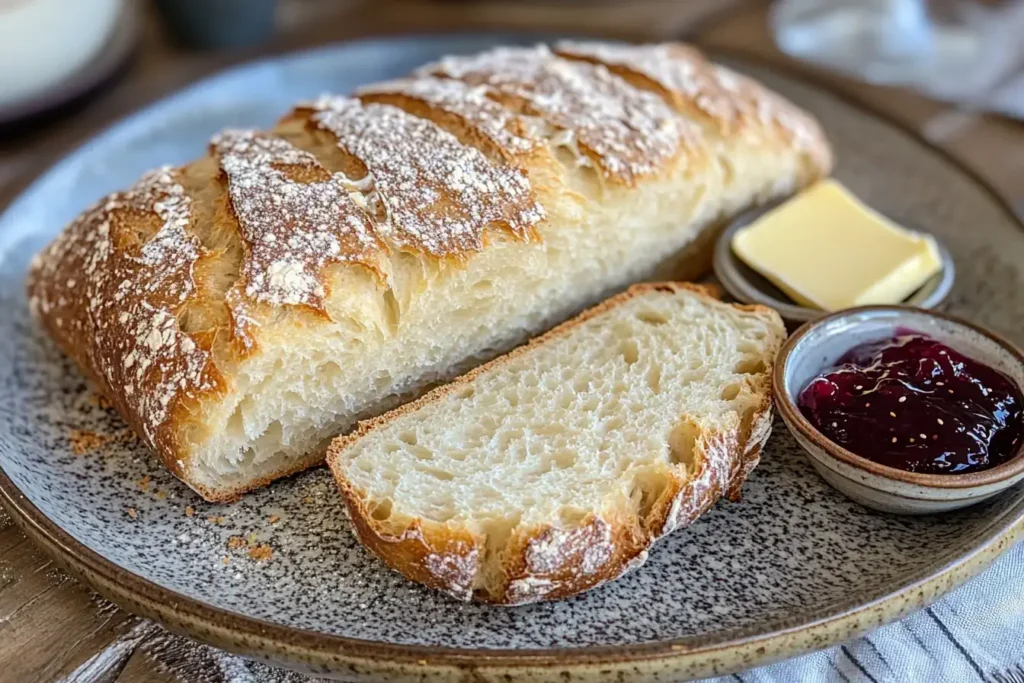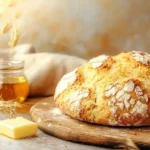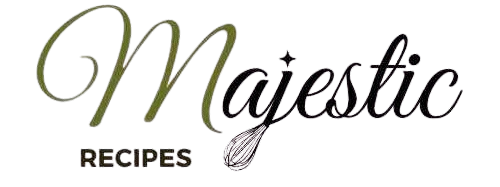There’s something magical about the smell of freshly baked bread wafting through your kitchen, isn’t there? If you’re looking for a wholesome, flavorful option, an einkorn bread recipe is your perfect choice.
Einkorn flour, an ancient grain known for its nutty taste and golden hue, adds a unique twist to traditional bread baking. Using an einkorn bread recipe, you can create a loaf that’s both delicious and nutritious. But don’t let its ancient origins fool you—baking with einkorn can be simple and rewarding.
Table of Contents
What is Einkorn Flour?
Einkorn flour isn’t just another flour; it’s the OG of grains—literally. Known as one of the earliest cultivated forms of wheat, einkorn has been around for thousands of years. Its small grains pack a punch of flavor and nutrition, making it a favorite among artisan bakers and health enthusiasts alike.
Unlike modern wheat, einkorn has a simpler gluten structure, which gives it a slightly nutty flavor and a golden hue. It’s softer, lighter, and doesn’t overwhelm your taste buds like other whole wheat flours might.
Did you know? Einkorn translates to “single grain” in German, a nod to its single spikelet structure.
Nutritional Benefits of Einkorn Bread
Baking with einkorn flour isn’t just about taste; it’s a nutritional upgrade. Packed with protein, fiber, and essential vitamins like B6 and E, it’s a healthier alternative to conventional bread. And guess what? It’s easier to digest, thanks to its lower gluten content.
Switching to einkorn bread can be like trading fast food for a gourmet meal—it’s just better for your body.
Why Choose Einkorn for Baking Bread?
Ever feel like your store-bought bread lacks soul? Einkorn flour is here to rescue your baking game. Its unique texture and flavor add depth to your loaf, making it perfect for everything from sandwiches to soups.
Tip: Einkorn bread pairs wonderfully with homemade butter and jam. It’s like breakfast poetry.
Step-by-Step Einkorn Bread Recipe
This section walks you through a foolproof einkorn bread recipe, covering every detail from kneading to baking. Follow these steps to bake a perfect loaf every time!
Essential Einkorn Bread Ingredients Explained

Before diving into the recipe, let’s gather our lineup of simple, wholesome ingredients:
| Ingredient | Quantity |
|---|---|
| Einkorn flour | 4 cups (500g) |
| Water | 1 ½ cups (375ml) |
| Salt | 1 ½ tsp |
| Active dry yeast | 1 tsp |
| Honey | 2 tbsp |
These ingredients come together like a symphony, creating a balanced dough that’s easy to work with and tastes divine.
Substitutes and Variations: How to Adapt the Recipe
No einkorn flour on hand? No worries! While einkorn is the star of the show, you can experiment with spelt or emmer flour for a slightly different texture and flavor. Want a sweeter loaf? Add a touch of molasses or swap honey with maple syrup.
Pro Tip: Feeling adventurous? Toss in some rosemary or sesame seeds to elevate your loaf.
Step-by-Step Einkorn Bread Recipe: From Mixing to Baking
Preparing the Dough: Tips for Success
Here’s where the magic begins. Start by mixing water, honey, and yeast in a large bowl. Let it sit for 5-10 minutes until frothy. This step activates the yeast, ensuring a fluffy bread.
Next, gradually add your einkorn flour and salt, stirring until the dough forms. Einkorn dough tends to be stickier than conventional dough, so don’t panic—it’s all part of the charm.
How to Properly Knead Einkorn Dough
Unlike typical wheat, einkorn doesn’t need aggressive kneading. A gentle mix does the trick. Use a folding technique, gently stretching and folding the dough over itself. It’s more yoga than gym workout.
Resting and Fermentation: Unlocking the Flavor
Let your dough rest in a covered bowl at room temperature for about 1-2 hours. This is when the yeast does its magic, creating air pockets and developing flavor. Patience is key here—great bread can’t be rushed.
Shaping the Loaf: Techniques for Perfect Form
Once the dough has risen, transfer it to a floured surface. Shape it into a boule (round loaf) or place it in a bread pan. Be gentle; you don’t want to knock out all those precious air bubbles.
Note: If your dough feels too sticky, lightly flour your hands or use parchment paper to shape it.
Baking Einkorn Bread: Timing and Temperature Tips
How to Get the Perfect Crust and Texture
Preheat your oven to 450°F (230°C). For a golden, crisp crust, place a pan of water on the bottom rack of the oven to create steam. Bake your loaf for 30-35 minutes until it’s beautifully browned and sounds hollow when tapped.
Common Baking Mistakes and How to Avoid Them
Is your bread too dense? That’s likely due to under-proofing. Did the crust burn before the inside was done? Lower the oven temperature slightly next time. Einkorn can be a bit temperamental, but once you get the hang of it, you’ll feel like a pro baker.
Why Did My Dough Not Rise?
It’s frustrating when your dough just sits there like a lump. The most common culprit is inactive yeast. Always check the expiration date on your yeast and proof it before mixing—if it doesn’t bubble, it’s time for a new batch.
Temperature plays a big role, too. If the water you’re using is too hot, it can kill the yeast. Aim for lukewarm water, around 105°F to 110°F (40°C to 43°C), for the perfect activation.
Quick Fix: If your dough doesn’t rise, let it rest in a warmer spot, like near a window or inside an oven with the light on.
How to Fix Dense or Gummy Bread
A dense loaf is often the result of under-kneading or insufficient proofing. Einkorn’s unique gluten structure means it requires a gentler hand and slightly longer proofing times than other flours. Overhydration can also lead to gummy textures—stick to the recipe’s water-to-flour ratio.
If the problem persists, try reducing the water slightly or using a higher protein einkorn flour for added strength.
Pro Tip: Always let your bread cool completely before slicing. Cutting too soon traps steam inside, making it gummy. Patience pays off!
Advanced Techniques for Baking with Einkorn
Experimenting with Sourdough Einkorn Bread
If you’re ready to take your einkorn bread to the next level, try sourdough! Using a natural starter not only enhances flavor but also makes the bread even easier to digest. Einkorn flour ferments beautifully, developing a tangy, complex taste that’s hard to resist.
To make a sourdough version, replace the yeast with a sourdough starter and adjust the water slightly. Proofing times will be longer, often up to 8-12 hours for the first rise, but the results are worth the wait.
Creating Artisan Loaves with Einkorn Flour
Artisan loaves are all about crusty exteriors and airy interiors. To achieve this, focus on hydration and steam. Use a Dutch oven to trap steam during baking, creating that perfect crust.
For a rustic touch, score your loaf with a razor blade or sharp knife before baking. These decorative cuts not only look beautiful but also allow the bread to expand evenly.
Fun Idea: Try different scoring patterns, like swirls or leaves, to add personality to your loaf.
Health Benefits of Eating Einkorn Bread Regularly
Lower Gluten Content and Easier Digestion
Unlike modern wheat, einkorn has a more digestible form of gluten, making it an excellent choice for those with mild sensitivities. Many people report feeling less bloated and more satisfied after eating einkorn bread.
It’s like giving your tummy a break without sacrificing the joy of bread.
Rich in Nutrients: A Healthier Bread Choice
Einkorn is a nutritional powerhouse. It’s loaded with antioxidants, minerals like iron and magnesium, and vitamins such as B6 and E. Incorporating einkorn bread into your diet can support your immune system and overall health.
Did You Know? Einkorn has up to 30% more protein than modern wheat. It’s bread with benefits!
Enhancing Flavor with Einkorn Bread Additions

Adding Nuts, Seeds, and Herbs to Einkorn Bread
If you love experimenting in the kitchen, einkorn bread provides the perfect canvas. Toss in sunflower seeds, walnuts, or chia seeds for extra crunch and nutrition. Herbs like rosemary, thyme, or basil add an aromatic twist that pairs wonderfully with soups and salads.
Simply mix these additions into the dough during the kneading process, and voilà—customized artisan bread!
Sweet Einkorn Bread Variations: Raisins, Honey, and More
For those with a sweet tooth, einkorn bread can easily transform into a dessert-like treat. Fold in raisins, dried cranberries, or even chocolate chips. A drizzle of honey or a dash of cinnamon can turn your loaf into a breakfast favorite.
Fun Tip: Pair sweet einkorn bread with cream cheese or mascarpone for an indulgent snack.
Storing and Reheating Einkorn Bread
Tips for Keeping Einkorn Bread Fresh
To preserve that just-baked goodness, store your bread in a bread box or wrap it in a clean kitchen towel. Avoid plastic bags—they trap moisture, which can make the bread soggy.
How to Revive Stale Bread: Techniques That Work
Don’t toss out that day-old bread! A quick trip to the oven can work wonders. Wrap the loaf in foil, sprinkle a few drops of water on it, and bake at 350°F (175°C) for 10 minutes. It’ll come out soft and warm, almost like new.
Bonus Hack: Use stale bread for croutons, breadcrumbs, or even a hearty bread pudding. Waste not, want not!
Exploring Einkorn Bread Beyond the Loaf
Einkorn Bread Rolls and Buns
Einkorn flour isn’t limited to traditional loaves—it’s incredibly versatile. For dinner rolls or buns, follow the same dough preparation steps but divide the dough into smaller portions. Roll each portion into a ball and place them on a baking tray, leaving space for them to rise.
Bake at 375°F (190°C) for 15-20 minutes, and you’ll have golden, fluffy rolls that pair beautifully with soups, stews, or even as sliders for burgers.
Pro Tip: Brush your rolls with melted butter and sprinkle with sea salt for a gourmet finish.
Einkorn Flatbreads and Pizza Dough
Dreaming of homemade pizza? Einkorn flour makes an excellent base for flatbreads and pizza dough. The dough’s slightly nutty flavor complements classic pizza toppings like fresh mozzarella, tomatoes, and basil.
Roll out your dough into thin rounds or rectangles, add your favorite toppings, and bake at a high temperature (around 475°F or 245°C) for 10-15 minutes. Dinner just got a whole lot tastier!
Einkorn Bread Recipe: Final Thoughts and Encouragement
Baking with einkorn flour is more than just a culinary endeavor—it’s a journey into the roots of ancient grains. While it comes with its unique challenges, the rewards are unmatched: healthier, tastier bread that nourishes both the body and the soul.
Whether you’re crafting a traditional loaf, experimenting with sourdough, or whipping up artisan creations, einkorn flour offers endless possibilities. So, roll up your sleeves, dust off your mixing bowls, and embrace the joy of baking with einkorn.
Remember: Baking is as much about the process as it is the product. Enjoy every step, and don’t be afraid to make mistakes—they’re just delicious lessons in disguise. Happy baking!
FAQs About Einkorn Bread Recipe
Can I use other ancient grains for a similar recipe?
Yes, you can experiment with other ancient grains like spelt or emmer flour. Each grain has unique characteristics but can deliver delicious results similar to an einkorn bread recipe. For another unique bread option, check out this date nut bread recipe for beginners—perfect if you’re in the mood for something sweet and nutty!
What is the best way to store einkorn bread?
Wrap your bread in a clean kitchen towel or store it in a bread box to keep it fresh for up to 3 days. You can also freeze it for longer storage.
Can I make einkorn bread gluten-free?
Unfortunately, einkorn flour is not gluten-free. However, it is lower in gluten than modern wheat, making it easier to digest for some individuals. If you want a gluten-free option, consider recipes designed specifically for gluten-free flours.
Can einkorn bread be made in a bread machine?
Absolutely! Just use the “dough” setting for mixing and rising. After that, you can bake it in the machine or transfer it to a traditional oven for better crust control.
Is einkorn flour expensive?
While einkorn flour tends to be pricier than conventional flour, its health benefits and unique flavor make it worth the investment. Plus, a little goes a long way in recipes!
Baking with einkorn flour is more than just a recipe—it’s a journey into the heart of ancient grains and wholesome living. With its unique flavor, rich golden color, and health benefits, mastering an einkorn bread recipe is a rewarding experience that brings history to your table.
Whether you’re a beginner trying out einkorn for the first time or an experienced baker experimenting with new techniques, this guide equips you with the knowledge and confidence to create a perfect loaf every time. From kneading the dough to savoring that first warm slice, every step is a reminder of the joy and simplicity of homemade bread.
So, don’t wait—grab some einkorn flour, roll up your sleeves, and start baking! With patience and practice, you’ll soon have a delicious, rustic loaf that’s as satisfying to make as it is to eat. Happy baking!
Exploring More Delicious Recipes
If you’re diving into the world of homemade baking and wholesome ingredients like einkorn flour, why stop there? There are so many creative ways to bring more flavor into your kitchen. Whether you’re in the mood for something sweet, creamy, or indulgent, here are some must-try recipes:
- Cool Whip Cookies – Light, airy, and irresistibly soft, these cookies are a fun and easy treat to whip up in no time. Try the recipe here.
- Cookie Dough Dip Recipes – Because who doesn’t love edible cookie dough? These dips are perfect for parties, snacks, or late-night cravings. Check them out here.
- Kefir Sheet Cake Recipe – Looking for a healthier dessert? This kefir-based cake is moist, flavorful, and packed with probiotics. Find the full recipe here.
- Javy Coffee Recipes – Want to level up your coffee game? These creative Javy coffee recipes will give your daily cup a delicious twist. Explore them here.
- S’mores Brownies Recipe – A rich, gooey, and chocolatey dessert that combines the best of brownies and classic campfire s’mores. Make a batch today.
- What to Pair with Cottage Cheese – Cottage cheese is versatile and pairs wonderfully with sweet and savory flavors. Not sure what to eat it with? Get inspiration here.
Baking and cooking should be a fun, flavorful experience. Whether you’re making artisan einkorn bread or indulging in a decadent dessert, experimenting with new ingredients is always a great way to add variety to your meals. So, grab your favorite recipe, preheat that oven, and enjoy the process!
Happy baking!
Print
How to Make Einkorn Bread recipe: A Step-by-Step Guide
- Total Time: Prep + Cook = ~2 hours 45 minutes
- Yield: 1 loaf 1x
- Diet: Vegetarian
Description
This rustic einkorn bread is packed with flavor, featuring a slightly nutty taste and a golden crust. Made with ancient einkorn flour, it’s easier to digest than modern wheat and has a rich, wholesome texture. Perfect for sandwiches, toast, or pairing with butter and jam!
Ingredients
Einkorn flour 4 cups (500g)
Water 1 ½ cups (375ml)
Salt 1 ½ tsp
Active dry yeast 1 tsp
Honey 2 tbsp
Instructions
In a large mixing bowl, combine warm water and honey. Stir until dissolved.
Sprinkle yeast over the top and let sit for about 5-10 minutes until frothy.
Gradually add einkorn flour and salt, stirring until a sticky dough forms. Avoid over-kneading—gentle mixing is enough.
Cover the bowl with a clean kitchen towel and let the dough rise at room temperature for 1-2 hours until doubled in size.
Transfer the dough to a floured surface and shape it into a round boule or place it into a loaf pan.
Preheat the oven to 450°F (230°C). For a crisp crust, place a small pan of water on the bottom oven rack to create steam.
Bake for 30-35 minutes, or until the bread is golden brown and sounds hollow when tapped.
Let the bread cool completely before slicing to prevent a gummy texture.
Notes
Einkorn dough is delicate, so avoid over-kneading for the best texture
If the dough is too sticky, lightly flour your hands or use parchment paper
For a softer loaf, bake at a slightly lower temperature (425°F/220°C) for a longer time
Let the bread cool completely before slicing to prevent a gummy texture
- Prep Time: 10 minutes + 1-2 hours rising
- Cook Time: 30-35 minutes
- Category: Bread
- Method: Baking
- Cuisine: Traditional / Artisan

